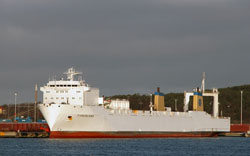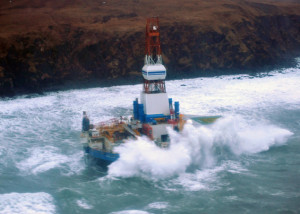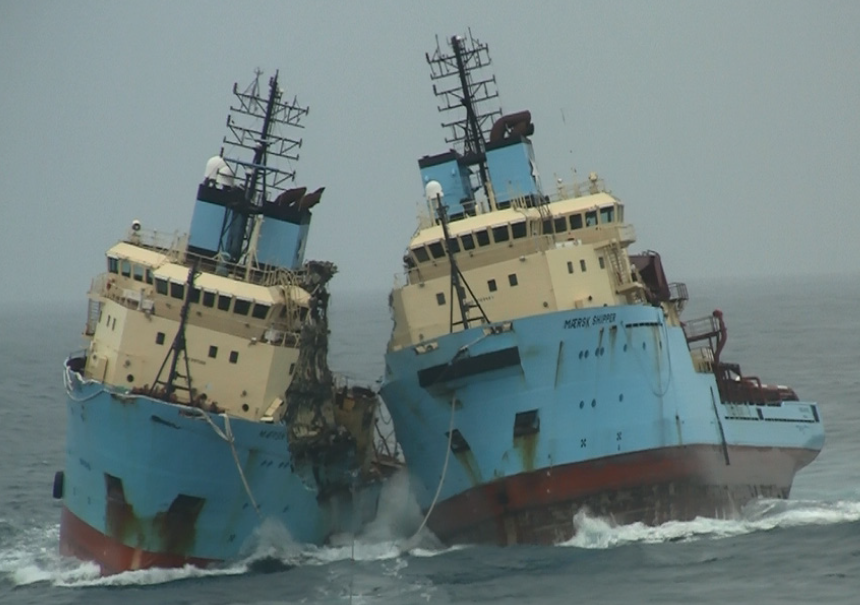Audits Highlighted Risk Assessment Weaknesses Prior to Ro-Ro Fatality
Audits highlighted weaknesses in risk assessments prior to a fatal accident on a ro-ro ship. The accident sadly highlights the importance of an effective Safety Management System (SMS) that includes effective risk assessments & procedures and prompt follow-up to audits.
The UK Marine Accident Investigation Branch (MAIB) issued their report on 16 July 2014 into the fatal crushing injury to an able seaman on British registered ro-ro cargo ship, Tyrusland in Tripoli, Libya on 15 May 2013.
This was the fourth accident in less than a year involving UK registered ships managed by Imperial Ship Management. Two of the accidents were fatal. The key safety issues identified were:
- Tyrusland’s crew and its embarked team of vehicle drivers did not have a safe system of work for the cargo handling operations which they were conducting.
- A risk assessment for deck operations existed but did not properly identify the hazards associated with the work being conducted. In particular, the danger of a crewmember being unsighted by a fork-lift driver while in the path of a moving container had not been addressed.
- The absence of a safe system of work or a thorough risk assessment meant that a dangerous condition emerged where ship’s crew were routinely operating in close proximity to moving vehicles without the necessary safeguards in force.
- Prior to the accident, weaknesses in the ship’s organisation had been identified in an internal audit by the company and a UK flag state audit by the Maritime and Coastguard Agency (MCA). However, the investigation identified that the company had not given a sufficiently high priority to management actions to address the identified shortcomings. In addition, the MCA’s follow-up action regarding non-conformities could have been more effective.
UPDATE 30 March 2015: Another maritime investigation report that highlights weak risk assessment is the Australian Transport Safety Bureau (ATSB) report on a serious injury on-board the Shell NWS Class LNG tanker Northwest Stormpetrel on 8 November 2014. This incident resulted in an Improvement notice from the Australian Maritime Safety Authority (AMSA). Shell’s own safety investigation identified a number of safety actions:
Focus areas identified for better risk awareness included joining ship briefings, familiarisation, work site assessments, personal protective equipment and audits. The development of effective risk assessments, their review and using them for work planning and toolbox talks were also identified. An increased focus on permits to work, particularly for invasive and pressurised systems, and the completion and verification of permits were other identified focus areas. Checking for defective equipment and better reporting through training were also noted.
UPDATE 22 May 2015: The US National Transportation Safety Board (NTSB) reported on the grounding in bad weather of the ice-class mobile offshore drilling unit (MODU) Kulluk, on Sitkalidak Island, near Kodiak Island, Alaska, on 31 December 2012. The Kulluk, owned by Shell Offshore and operated by Noble Drilling, had been undertow by the ice-class anchor-handling tow supply vessel Aiviq. They had departed Captains Bay near Unalaska, Alaska, 10 days earlier for the Seattle, Washington for maintenance and repairs.
The NTSB determined that the probable cause was:
Shell’s inadequate assessment of the risk for its planned tow of the Kulluk, resulting in implementation of a tow plan insufficient to mitigate that risk.
UPDATE 1 September 2017: The Danish MAIB have published their report on the loss of two supply vessels being towed for breaking. The report is discussed in these articles:
- DMAIB: Inefficient risk assessment caused Maersk supply ships to sink
- Repeated Collisions Led to Maersk PSV Sinkings
DMAIB say:
On the night between 21 and 22 December 2016, the Danish offshore supply ships MÆRSK SEARCHER and MÆRSK SHIPPER capsized and sank in the Bay of Biscay approximately 65 nm off the French coast while being towed by another offshore supply ship, MÆRSK BATTLER, en route to Aliaga, Turkey.
MÆRSK SEARCHER and MÆRSK SHIPPER were configured in a side-by-side towing setup during the voyage. During the passage of the English Channel, the fenders between the ships on tow failed, and the ships started to interact. This caused damage to the ships’ superstructure, which eventually compromised MÆRSK SEARCHER’s watertight integrity and led to water ingress.
MÆRSK SEARCHER capsized and sank, and subsequently MÆRSK SHIPPER was pulled under by MÆRSK SEARCHER. The crew on MÆRSK BATTLER carried out a controlled breakage of the towing wire and came loose of the foundered towage.
The DMAIB regards the foundering…as a systemic accident. This means that local and technical circumstances unfolding on board MÆRSK BATTLER during the voyage cannot be isolated from the preceding organisational events and circumstances taking place months earlier.
Significantly the tow had been originally planned with a less capable hip, necessitating a higher risk tow configuration. When a better equipped ship was substituted the plan was not changed. The superintendent who started the towing plan was laid off in a round of dismissals and was not given time to hand over his work. “Shortly thereafter, another round of reorganization completely replaced the leadership for Maersk Supply’s Europe operations”.
The DMAIB go on:
It is concluded in the report that the loss of fenders, collision and flooding of the unmanned ships under tow had been addressed in the risk assessment carried out, and that risk mitigating initiatives were in place for each risk item. However, these initiatives were ineffective.
DMAIB noted that Maersk Supply had used industry-standard tools to evaluate the risk:
The risk management system offers to handle risk as an objective value and to provide a structure for handling risk. However, there is no aid or control of what is put into the system . . .The numeric risk value is based solely on how imaginative the involved persons are.
The assessment of the risk reduction is highly sensitive to one or more individuals’ subjective risk perception, which will be strongly influenced by the desire to make the operation possible. Thereby, the risk management system will rarely limit activities prone to risk. In fact, the risk management system instead tends to facilitate the carrying out of risk prone operations.
The DMAIB concludes that the risk mitigating strategies were mainly focused on preventing risk factors in isolation and left little or no contingency for acute interaction between the risk factors.
We discussed a similar topic here: Regulatory Reflections & Resisting the Seduction of the Risk Management Process
In 2010 the UK Maritime and Coastguard Agency, supported by BP Shipping, Teekay Marine Services, and the Standard P&I Club, produced The Human Element: a guide to human behaviour in the shipping industry. The MCA has also published: Leading for Safety




Recent Comments